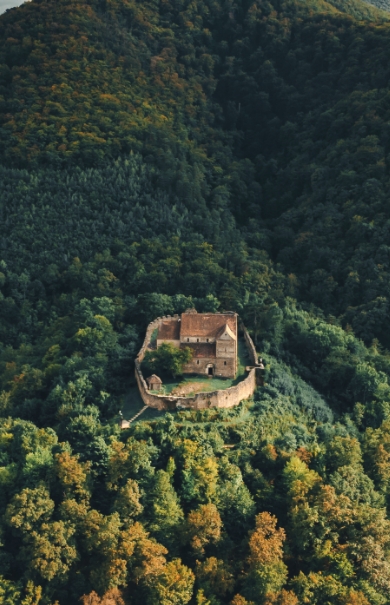Romania has two climate zones: the inland, which experiences very different temperatures in winter and summer, versus a slightly milder climate around Bucharest and on the coast. May to September is the most popular time to visit due to the frequent sunshine and warmth, but consider April if you want to enjoy the local culture, as it is the time of many festivals and celebrations.
January: The Coldest Month of the Year
While all regions are subject to low temperatures, some are colder than others at the start of the year. The centre of the country averages -2°C, as do the east and west. While Bucharest is slightly warmer, it barely exceeds zero throughout January. The Black Sea coast, generally more temperate, is a few degrees warmer (around 4°C in Constanta) but has higher rainfall and cloud cover at this time of year.
February: Wet, Wet, Wet
The temperatures in Bucharest rise one or two degrees in February, along with the humidity, so expect rainfall during your stay. The east, west and centre are still bitterly cold with a little more rain in Brasov and Cluj-Napoca. The Black Sea coast reaches around 8°C, with frequent rain. Wherever you are, expect cloud and sunny spells.
March: Spring is Coming
The country warms up in March and the milder temperatures are often accompanied by showers. Bucharest averages 9°C but rain should be expected. When the sun shines, enjoy exploring the alleys of Bucharest and sit at one of the trendy terraces. The east has similar conditions with slightly less rainfall, while the west and centre are a little colder at around 5°C, with heavy rain. The coast is milder but be sure to pack a raincoat for the showers.
April: Sunny Days Surface
Temperatures jump dramatically in April. At the beginning of the travel season, Bucharest hits a pleasant 16°C on average, with beautiful sunshine and occasional showers. Bacau is a little drier and just as mild at this time of year, although we’d suggest heading instead to Casin - a charming village with traditional houses on the banks of the river of the same name. Its 17th century monastery is also worth a visit. Cluj, to the west, is rainier but enjoys very pleasant spring temperatures, as do the coastal cities, and only Brasov remains rather cold and wet. April is the month of various celebrations, the most important being Orthodox Easter when various fairs and painted egg festivals pop up across the country. Music lovers should head to Sfântu Gheorghe in Transylvania on the last weekend of April, when the city hosts a three-day folk festival.
May: Head for the Black Sea
May is a rainy month in Romania, but it’s drier on the coast. Go to Constanta, which is a nice mix of east and west with a Mediterranean atmosphere. But the region’s real gem is Mamaia, nicknamed the ‘Pearl of the Black Sea’. The city stretches along a strip of land between the Black Sea and Lake Stiughol and has a fine sandy beach, the only downside being the many hotels that dominate the waterfront.
June: The Rain Persists
While May is the rainiest month of the year, it is closely followed by June, which is very humid. Showers abound, apart from in the coastal cities where frequent dry spells can be expected.
July: The Heat Takes Hold
In July, the situation changes in most regions, except for in the west and centre, which are still subject to showers. The heat is rising, especially in the Black Sea region which can reach 30°C. To cool off, head to Bucovina and its monasteries hidden in the forest. Putna Monastery is one of the must-sees: a place of pilgrimage nestled in the hills, it houses the tomb of Stephen the Great, who founded many religious buildings in Moldova.
August: High Summer Heat Wave
In August, the entire country is plunged into heat and drought, except for the central zone. Plan to shelter during the hottest hours – you can expect 33°C in Bucharest and around 30°C in Bacau and Constanta. Fortunately, Romania is home to many beautiful lakes that are ideal for cooling off in. Take a trip to Sfanta Anna, located in the Ciomatu Mare mountains. Formed in the crater of a volcano, it is the only lake of its type in Romania and has beautifully clear water. You can also visi














